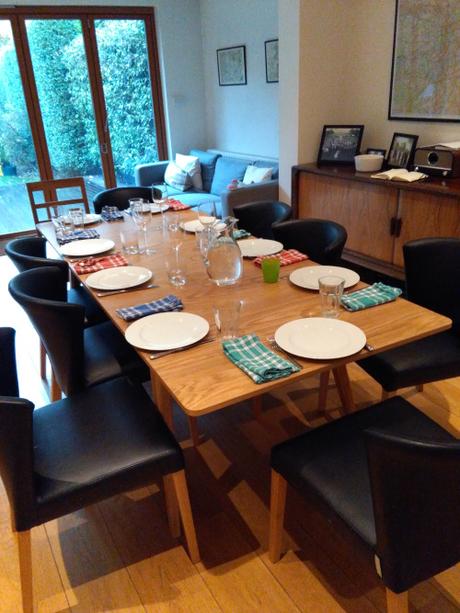Table manners – are they dead or alive? Getting better or getting worse over time?
If you ponder these questions, then the above book is for you: The Ritual of Dinner – The Origins, Evolution, Eccentricities and Meaning of Table Manners by Margaret Visser. It covers how people – across time and across cultures – behave at the table going from how such behaviours are learnt as part of growing up and then played out during the process of a formal meal with invitations, sitting at the table, getting the food eating it and then at the end of the meal.
As you might imagine, it is a fascinating read, but with a major shortcoming: it is dated. The book was written in 1991 and updated with an additional chapter in 2008 and so misses out on the developments in food culture from the past decade. This is significant as it has been all too easy for the author to perceive, from the perspective of their understanding of the subject and the experience over their lifetime, that we have reached a nadir in table manners and respect for food.
Yes, compared to earlier generations, it could appear that we are dismissive of food, seeking poor quality but highly convenient options. Food is a means to an end – refuelling out of necessity and not an end in itself to be enjoyed and shared with others. Eating is an individualised activity – not just because we often eat on our own but this is designed into the structure of food options – as captured in this memorable description of the burger:
Every burger is self-contained, as streamlined and replete as a flying saucer, and just unmistakably as a child of the modern imagination….Hamburgers are ready very fast (we do not see, and therefore discount all the work which this speed and availability presuppose), and they take only a few minutes to eat: informality in this case cuts away time and clearly signals a disclination to share.
I do not wish to deny that eating has become individualised – in a way this has become truer than ever as much of all that we do in our lives, whether work or leisure, is done alone – think of working home alone, watching your personal choice of content on your own device, as well as having your own meal to fit in with your particular schedule and taste and health preferences. Woe betide any school child that tries to share or swop food – with much better awareness of allergies and intolerances, across all generations, we all know better than to simply offer what is on our plate/in our packed lunch with someone else – what if they are wheat intolerant?
However, I think it is fair to say that, in certain cultures, in particular more Western and urban populations, as well as among our beloved Millennials, food has been re-evaluated. We are now willing to invest significant time and effort into looking at, preparing, sharing and eating food. Some have argued that food now plays the role that music did for earlier generations – a way of establishing identity and defining their relationship with current society.
This is not to say that we are necessarily cooking more, eating healthier or adopting better table manners (I don’t think it would be hard to find evidence to challenge those assertions, in particular if you think about the rise of streetfood, food that is meant to be eaten with hands such as pulled ribs or even the rise of food in bowls- effectively taking us back several centuries when we only had a spoon and knife with which to eat). No, what I would like to challenge instead is Visser’s implicit assumption that food is not important to us – it is and having a beautiful social eating experience is an aspiration and experience that people hold dear.

